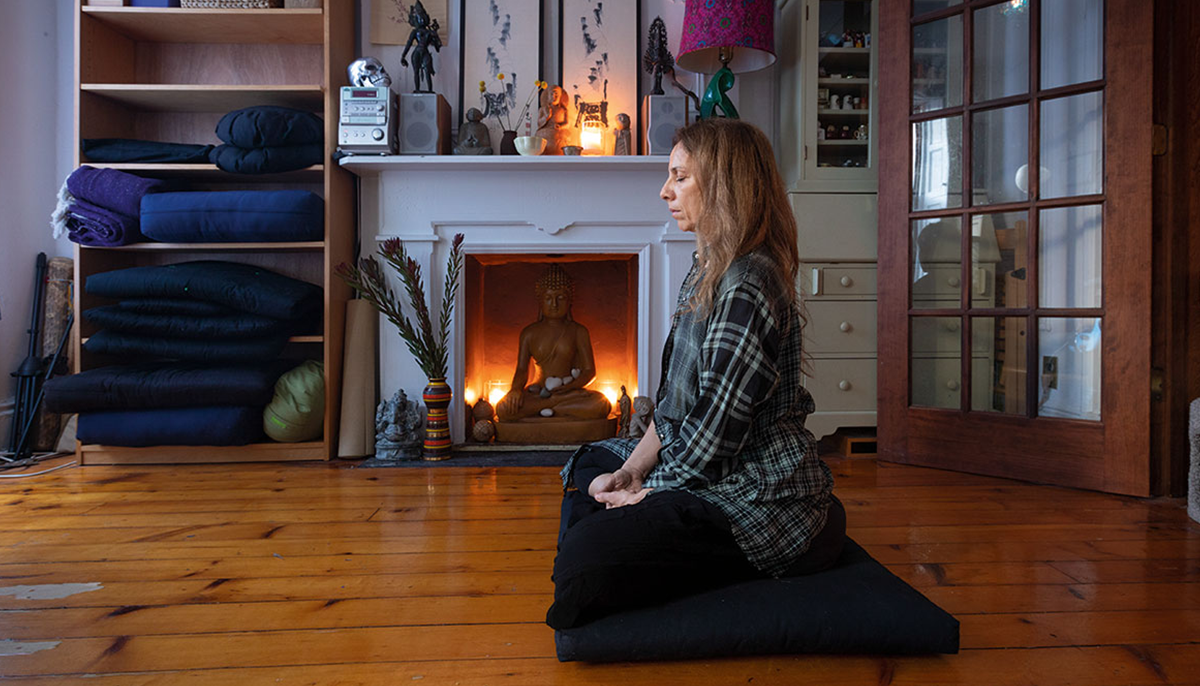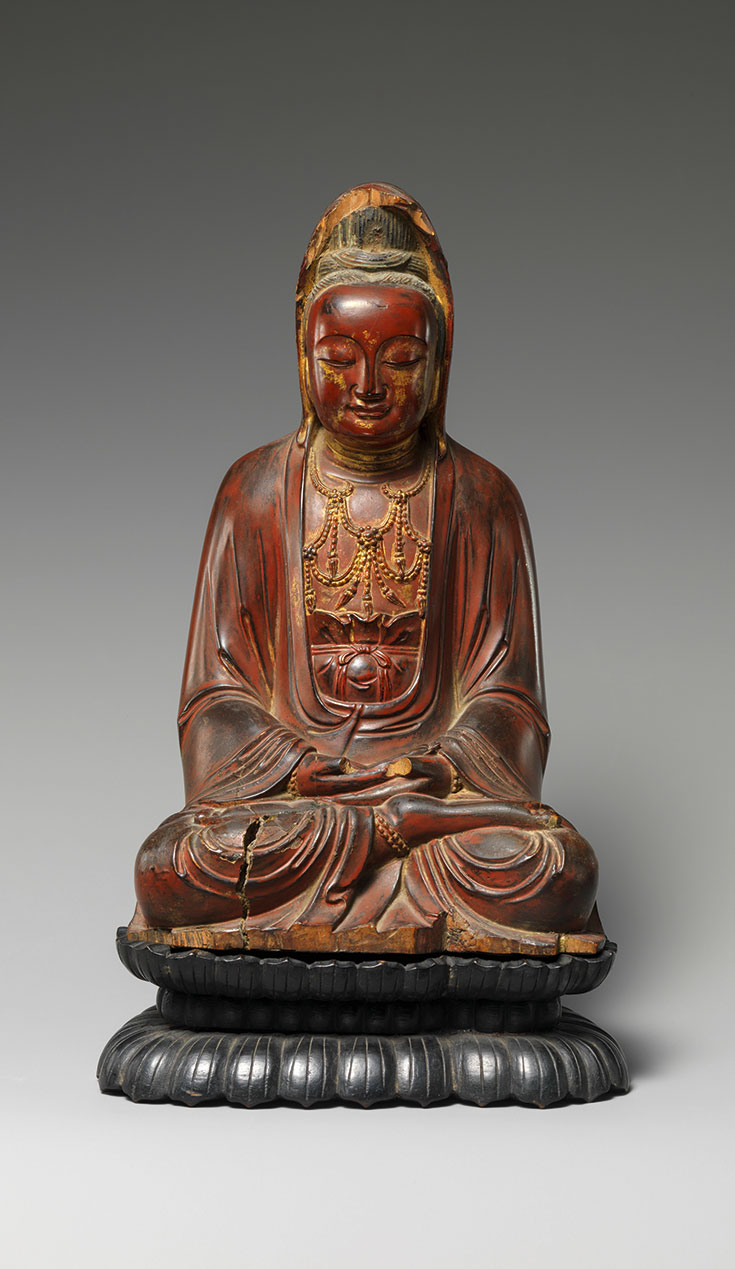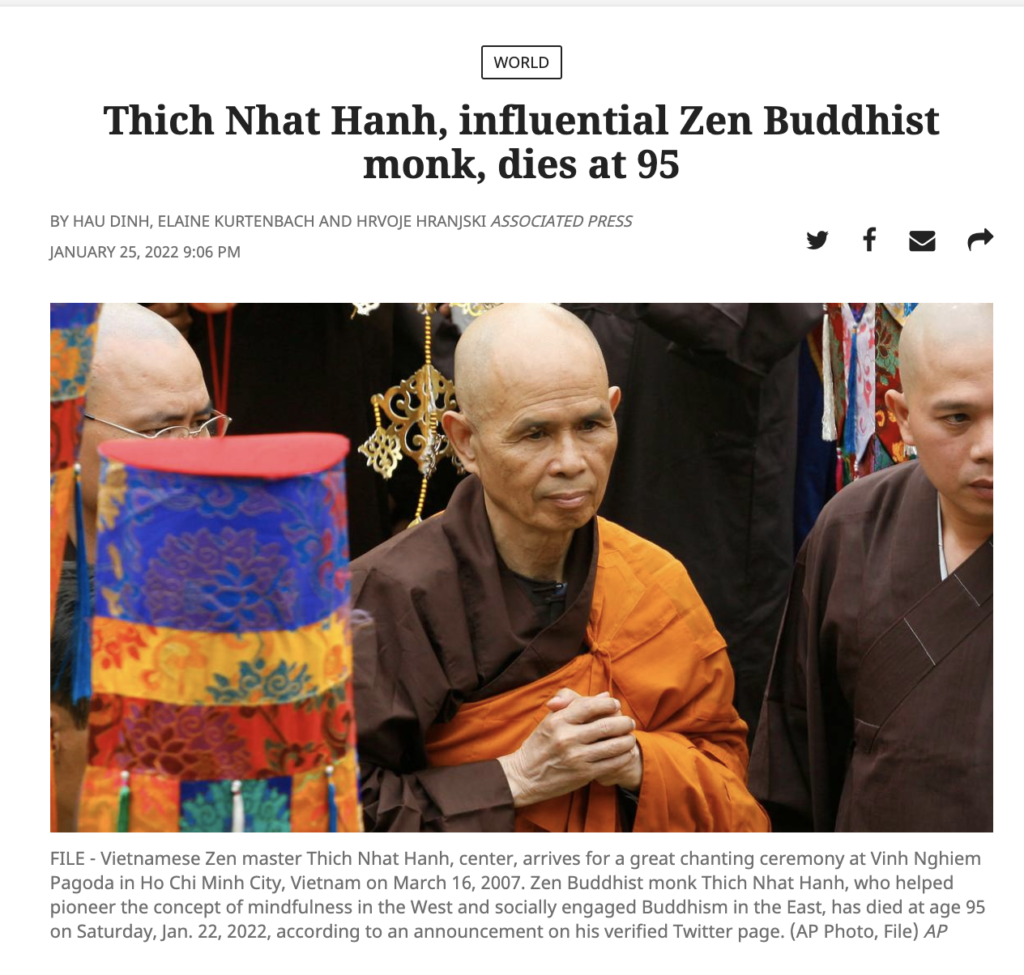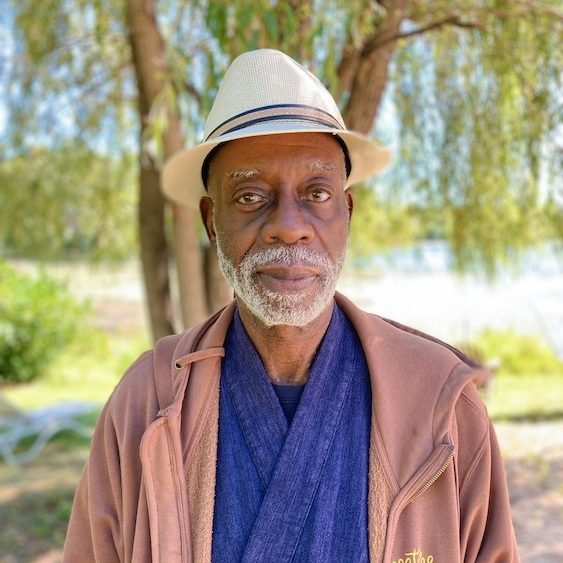The Mindful Bodhisattva
Mindfulness is more than just a meditation practice. Mindfulness is life, and life is love. That’s why it’s the whole path of the bodhisattva, says Zen teacher Norman Fischer. The post The Mindful Bodhisattva appeared first on Lion's Roar.

Mindfulness is more than just a meditation practice. Mindfulness is life, and life is love. That’s why it’s the whole path of the bodhisattva, says Zen teacher Norman Fischer.

Photo by A. Jesse Jiryu Davis.
At the beginning of the Mindfulness Sutra the Buddha makes a strong claim: mindfulness, he says, is the only way to purify the mind, overcome suffering and pain, attain the way, and realize nirvana, perfect peace.
But what exactly is mindfulness? The sutra does not offer a definition, but we think we know: mindfulness is awareness, consciousness. To be mindful of something is to be conscious of it.
But if we think about this further, we see that mindfulness is even more: mindfulness is life. Because being alive is being conscious; even if we’re sleeping and, as we say, unconscious, consciousness is functioning in some way. So being alive is being conscious, being consciousness—being mindful.
Of course, consciousnesses is subject to all sorts of conditioning. My consciousness, let’s say, conditioned by my being a male, an English speaker, and a white person, is different from yours, if you are, say, a female and a Black person and a French speaker, and so on. We are conditioned by our historical period, our group identity, our economic class, our family, and our individual experiences. And as we now see so clearly, such conditioning is not trivial; it cannot be easily dismissed.
But when it comes to basic consciousness, the light that illuminates the mind, let’s call it, all humans (indeed everything that lives!) shares something fundamental.
The job of the Mindfulness Sutra is not to analyze all this, but rather to show how to practice so as to enhance and develop the mindfulness that is automatically there, so we can purify the mind, end suffering, and achieve the path, the goal.
I find all this truly amazing. Being a conscious human being is already a great blessing. You are already mindful. You are most of the way to nirvana already!
Now all you have to do is refine and train that mindfulness, reorient it enough to let it do what it naturally will do but has been blocked from doing by conditioning. This is why, despite the first noble truth that all conditioned existence has the nature of suffering, the Buddhist tradition tells us we are born into “a precious human life.” Yes, there is plenty of suffering, but we have what it takes to overcome it.
The Mindfulness Sutra delineates four foundations, or four practices, to develop mindfulness: mindfulness of the body, mindfulness of sensations/feelings, mindfulness of mind/consciousness, and mindfulness of what are called “mind objects.” If we assume these four practices are cumulative, each one leading to the next, then mindfulness of mind objects brings us close to the goal—awakening.
The sutra provides several lists of mind objects—traditional lists like the five hindrances (five typical disadvantageous states of mind, like doubt or obsession), and various other common lists of problematic mental and emotional states. It also provides lists of positive objects, including the mental and emotional states that lead to awakening (called the seven factors of awakening), and the four noble truths, the basic Buddhist map of existence.

Guanyin, China, 1624 courtesy of Metropolitan Museum of Art / Fletcher Fund, 1936
All this tells us that to be mindful of mind objects is to know how to distinguish between states of mind that tend toward suffering and trouble, and states of mind that lead in the direction of purification and peace.
In other words, if you develop mindfulness fully, you will eventually see the basic shapes of consciousness—both positive and negative—that we all share. In effect, you will feel your way through and beyond your individual conditioning, and you’ll see more or less what it is to be alive, including all the joys and sorrows of our condition.
The actual effect of this, if you feel it deeply enough, is a sense of solidarity with everyone who shares—despite the differences they may have from you—a human mind and heart.
This is what I believe the Buddha means by purification of mind, the end of suffering, the path, and nirvana. Just this: to know what we are, and that we all share this human experience together.
This of course is a Mahayana interpretation of the Mindfulness Sutra, emphasizing that the path of mindfulness is also the path of caring. In the end, to be mindful is to profoundly accept, with love, all that lives, humans and non humans alike. And out of this love comes a deep commitment to help and not to harm. Because life wants to protect and preserve itself, when your mindfulness practice shows you that you are not only yourself and your family and your group, but you are life itself, then naturally you are benevolent. You want to be of service.
And this is the basis of Buddhist ethics. It is awakening itself.
In the Pali canon, the early teachings, the Buddha in his former lives is called “the bodhisattva,” a buddha in training. During those lives his main practice wasn’t meditation or insight. It was devotion and kindness. These practices enabled him to finally be born as Buddha so he could attain awakening in order to be of service to people in our world, in our historical era.
In Mahayana Buddhism the idea of the bodhisattva is generalized to include all of us. It’s as if each one of us is, like the Buddha, a very special and precious person. Each of us is going to be a buddha someday and we are preparing ourselves for this, just as Buddha did, by practicing kindness and benefitting and loving others. There are as many kinds of bodhisattvas as there are kinds of beings, each one with their unique way to help, from their unique position in this lifetime.
This means that although a lifetime of awakened mindfulness practice will show us our identity with, solidarity with, and love for all beings, our individual karmic conditioning, as male or female, white or Black or brown, wealthy or poor, educated or not, and so on, will give us a position from which we can reach out. So our identity with one another and all of life gives us the basis for morality. And it is the passion of our difference that gives us what we need so that we can illuminate one another, and serve one another with love. So awakening equals our sameness (love), and our difference (loving action).
Western Buddhism has been focused on meditation practice partly as a reaction to Christianity’s emphasis on faith: meditation is experiential—you sit and find out for yourself. But throughout its history in Asia, meditation practice has not been as central to Buddhism as it is in the West. Because the truth is, Buddhism has always been more about cultivating loving and peaceful action—a way of life—than about achieving concentration and insight through meditation. The reason to cultivate concentration and insight is to purify the mind of its deeply rooted selfishness, so that the deeper heart of love— called buddhanature in Mahayana Buddhism—can shine through.
The bodhisattva path is usually defined by six practices, known as the six paramitas, or perfections: generosity, ethical conduct, patient forbearance, joyful effort, meditation, and transcendent insight, or prajnaparamita. Meditation and insight have their place here for sure, but in the context of four other practices that emphasize conduct.
Generosity
Generosity is open-heartedness—giving material, psychological, and spiritual gifts. It means working to always expand the heart and the view, so you see beyond the smallness of your world a boundless world of generosity of spirit.
Ethical Conduct
Ethical conduct is built on a foundation of love. In order to benefit and never harm others, the bodhisattva keeps in check all forms of conduct that would directly and indirectly hurt others and promotes all forms of conduct that would directly and indirectly benefit others.
I think that in a complex world, bodhisattvas will always be what we might call political, in the sense that their caring and their thoughtfulness would lead them to be active in promoting policies and candidates and attitudes and programs, as well as all forms of personal conduct, that would reduce harm and promote benefit for all. Now we are much focused on the environment, and on anti-racism and economic justice in the United States, long overdue. Certainly bodhisattvas see wise action in these areas as central to the path.
Patient Forbearance
Patient forbearance is the ability to accept and be open to all kinds of difficulty and loss. Bodhisattvas work hard to benefit others, but they are never disappointed because they are willing to accept whatever outcomes occur as the basis for further action. Loss will come, pain will come, defeat will come, and every loss, pain, and defeat is a chance to deepen and bring more wisdom and stability to our love.
Joyful Effort
Joyful effort is the bodhisattva’s commitment to always continuing the practice, lifetime after lifetime. The Mahayana path reinterprets the teaching of early Buddhism that seems to point toward means and ends—as in the Mindfulness Sutra, training that will lead to the goal of nirvana. In Mahayana Buddhism, process and goal are one and the same; means and ends merge. Bodhisattvas go on and on being reborn into this world out of love for sentient beings. Awakening is their practice.
While ethical choices in a complex world are certainly difficult—who can know for sure what is to be done or not done?—the basic ethical practice of a bodhisattva is simple: caring, energetic effort for the general good, endlessly cultivated and deepened: the ongoing and active transformation of selfishness into love.

 UsenB
UsenB 































